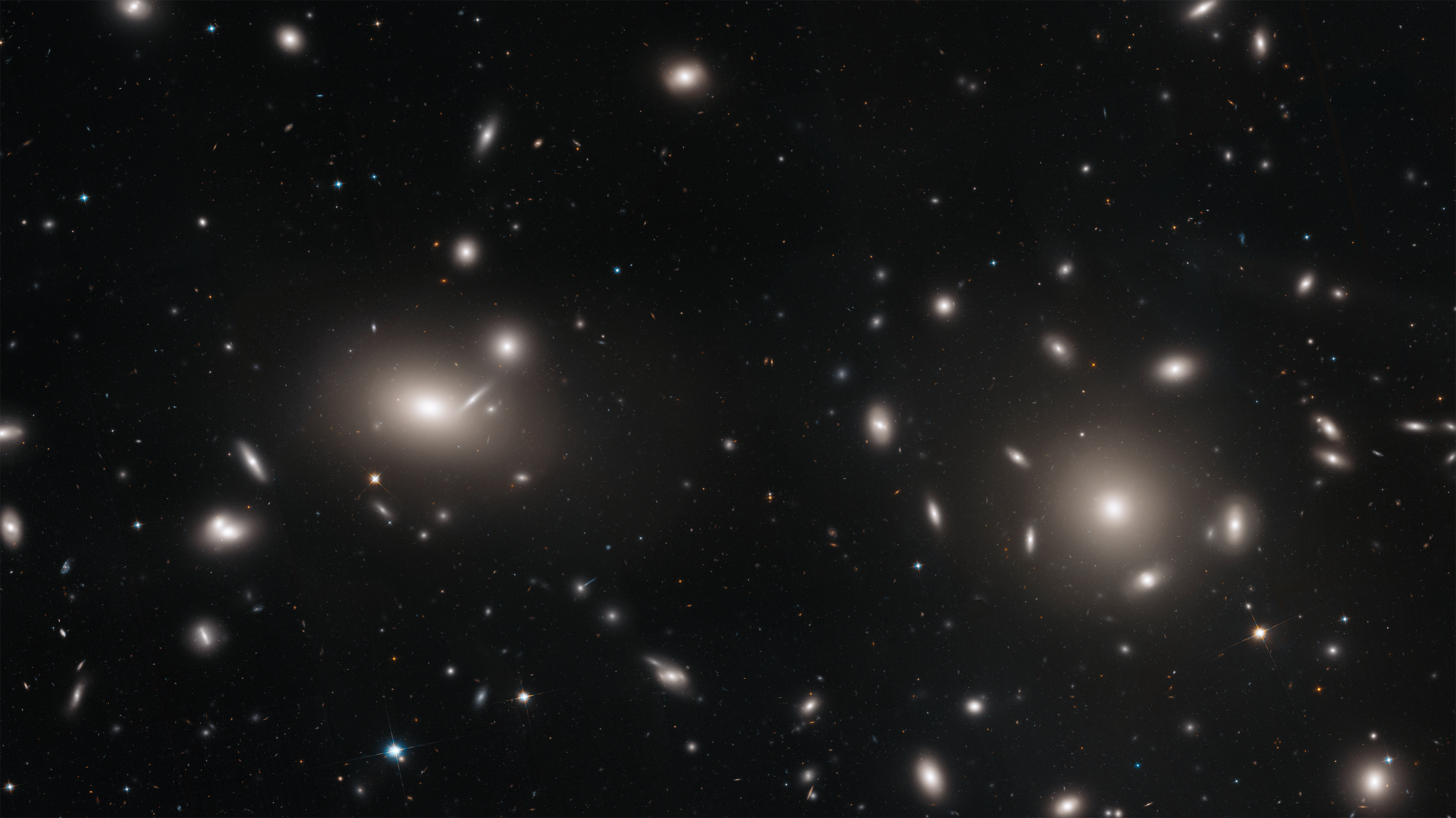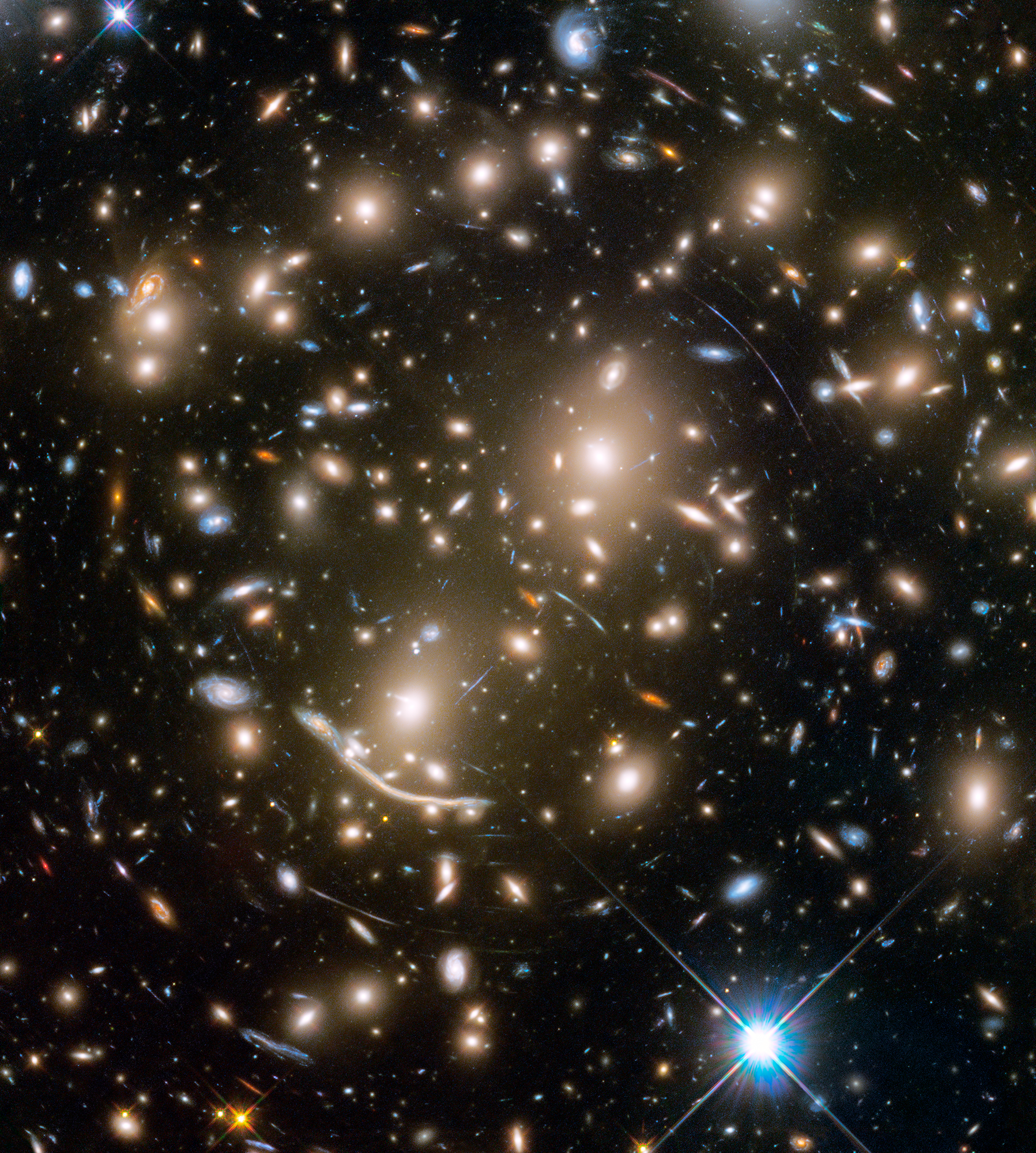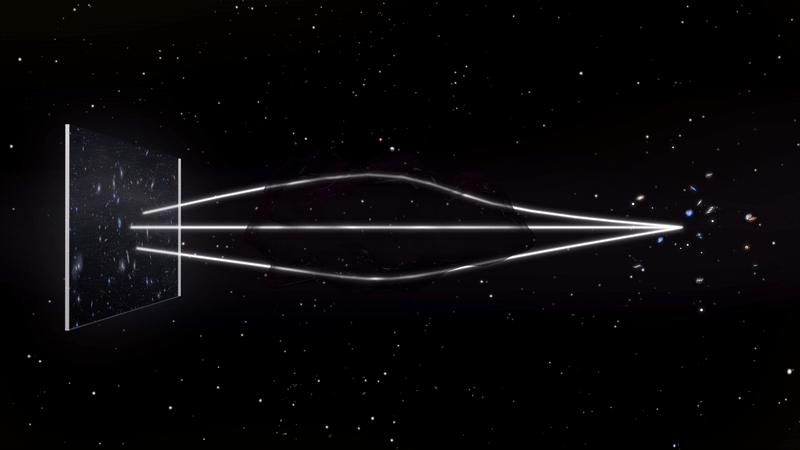
Editor’s note, Sept. 23, 2020: The Wide Field Infrared Survey Telescope (WFIRST) was officially renamed the Nancy Grace Roman Space Telescope on May 20, 2020.
The true nature of dark matter is one of the biggest mysteries in the universe. Scientists are trying to determine what exactly dark matter is made of so they can detect it directly, but our current understanding has so many gaps, it’s difficult to know just what we’re looking for. WFIRST’s ability to survey wide swaths of the universe will help us figure out what dark matter could be made of by exploring the structure and distribution of both matter and dark matter across space and time.
Why is dark matter such a perplexing topic? Scientists first suspected its existence over 80 years ago when Swiss-American astronomer Fritz Zwicky observed that galaxies in the Coma cluster were moving so quickly they should have been flung away into space — yet they remained gravitationally bound to the cluster by unseen matter. Then in the 1970s, American astronomer Vera Rubin discovered the same type of problem in individual spiral galaxies. Stars toward the edge of the galaxy move too fast to be held in by the galaxy’s luminous matter — there must be much more matter than we can see in these galaxies to hold the stars in orbit. Ever since these discoveries, scientists have been trying to piece together the puzzle using sparse clues.
There is currently a wide range of dark matter candidates. We don’t even have a very good idea what the mass of dark matter particles might be, which makes it difficult to work out how best to search for them. WFIRST’s wide-field surveys will provide a comprehensive look at the distribution of galaxies and galaxy clusters across the universe in the most detailed dark matter studies ever undertaken, thanks to dark matter’s gravitational effects. These surveys will yield new insight into the fundamental nature of dark matter, which will enable scientists to hone their searching techniques.
Most theories of the nature of dark matter particles suggest they almost never interact with normal matter. Even if someone dropped a huge chunk of dark matter on your head, you would probably perceive nothing. You wouldn’t have any means of detecting its presence — all of your senses are moot when it comes to dark matter. You wouldn’t even stop it from hurtling straight through your body and on toward Earth’s core.
This doesn’t happen to regular matter, such as cats or people, because forces between the atoms in the ground and the atoms in our bodies prevent us from falling through Earth’s surface, but dark matter behaves strangely. Dark matter is so inconspicuous it is even invisible to telescopes that observe the cosmos in forms of light our eyes can’t see, from radio waves to high-energy gamma rays.
“Lensing” dark matter
If dark matter is invisible, how do we know it exists? While dark matter doesn’t interact with normal matter in most cases, it does affect it gravitationally (which is how it was first discovered decades ago), so we can map its presence by looking at clusters of galaxies, the most massive structures in the universe.
Light always travels in a straight line, but space-time — the fabric of the universe — is curved by concentrations of mass within it. So when light passes by a mass, its path curves as well: a straight line in a curved space. Light that would normally pass near a galaxy cluster instead bends toward and around it, producing intensified — and sometimes multiple — images of the background source. This process, called strong gravitational lensing, transforms galaxy clusters into colossal natural telescopes that give us a glimpse of distant cosmic objects that would normally be too faint to be visible.
Since more matter leads to stronger lensing effects, gravitational lensing observations provide a way to determine the location and quantity of matter in galaxy clusters. Scientists have discovered that all of the visible matter we see in galaxy clusters isn’t nearly enough to create the observed warping effects. Dark matter provides the surplus gravity.
Scientists have confirmed earlier observations by measuring how much matter in the very early universe is “normal” and how much is “dark” using experiments like NASA’s Wilkinson Microwave Anisotropy Probe (WMAP). Even though normal matter makes up everything we can see, the universe must contain more than five times as much dark matter to fit the observations.

WFIRST will build on previous dark matter studies by using so-called weak gravitational lensing that tracks how smaller clumps of dark matter warp the apparent shapes of more distant galaxies. Observing lensing effects on this more refined scale will enable scientists to fill in more of the gaps in our understanding of dark matter.
The mission will measure the locations and quantities of both normal matter and dark matter in hundreds of millions of galaxies. Throughout cosmic history, dark matter has driven how stars and galaxies formed and evolved. If dark matter consists of heavy, sluggish particles, it would clump together readily and WFIRST should see galaxy formation early in cosmic history. If dark matter is made up of lighter, faster-moving particles, it should take longer to settle into clumps and for large-scale structures to develop.
WFIRST’s gravitational lensing studies will allow us to peer back in time to trace how galaxies and galaxy clusters formed under the influence of dark matter. If astronomers can narrow down the candidates for dark matter particles, we’ll be one step closer to finally detecting them directly in experiments on Earth.
By Ashley Balzer
NASA’s Goddard Space Flight Center, Greenbelt, Md.
Media contact:
Claire Andreoli
NASA’s Goddard Space Flight Center, Greenbelt, Md.
301-286-1940























